Unexpected Opportunities
Delayed another day. I've decided to not get frustrated, but get out there and see what Christchurch has to offer. I took this opportunity to explore the wildlife, and not so wild-life - of New Zealand. Fellow Polar TREC teacher Amy Osborne and I visited the Willowbark National Wildlife Reserve just outside of the city.
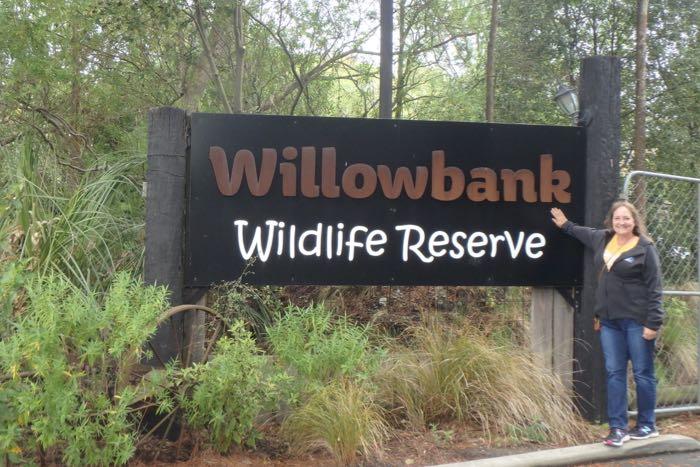 Denise Hardoy Outside the Willowbank Wildlife Reserve in Christchurch, NZ
Denise Hardoy Outside the Willowbank Wildlife Reserve in Christchurch, NZ
This reserve is dedicated to the conservation and care of the wildlife and rare/heritage breeds of livestock. They display the animals in their natural setting so the public can get to know these amazing species, all while keeping the stress on the animals at a minimum. They participate in breeding programs that help to keep these species going.
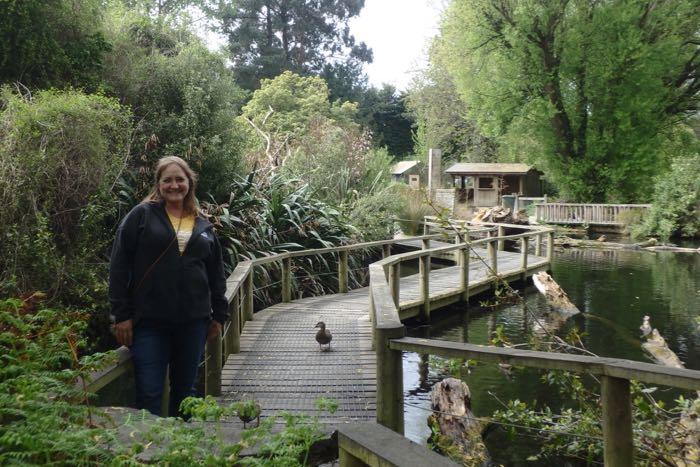 Denise Hardoy on the raised pathway at Willowbark Wildlife Reserve.
Denise Hardoy on the raised pathway at Willowbark Wildlife Reserve.
Longfin Eels
Our first encounter was with a species I have never heard of, Anguilla dieffenbachii, commonly known as the Longfin Eel. This freshwater species is the largest freshwater eel in the world. It can grow to two meters and weigh as much as 88 pounds! Of course, it takes a long time to grow this big. They can live up to 100 years. They are native only to NewZealand fresh waterways, where they are still quite abundant. However, due to a lot of fishing pressure and their slow life cycle, it is difficult to find the really large ones in the wild anymore.
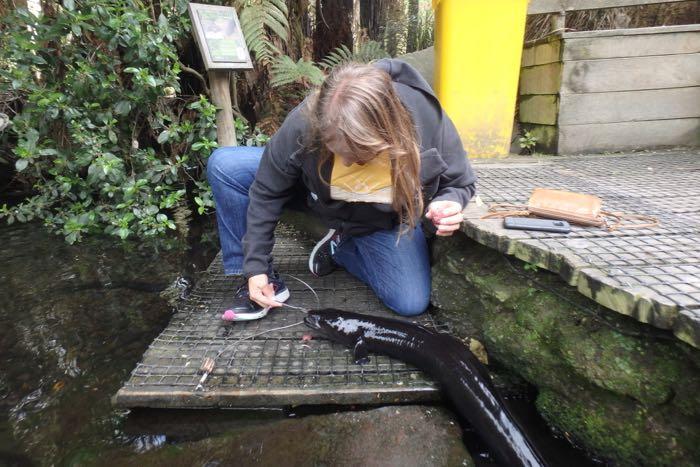 Feeding Eels at the Willowbank Wildlife Reserve
Feeding Eels at the Willowbank Wildlife Reserve
They have a very interesting life cycle. Gravid females migrate into the open ocean to an area further north- near Tonga- to lay their eggs(Remember,they are fish, not snakes!) The females only lay eggs one time, then they die. Their eggs hatch as tiny unrecognizable leaf shaped bits. They float south to New Zealand by the thousands in the spring. These small organisms grow into eel shaped transparent "glass eels" for a while. As they continue to grow, they enlarge and darken into "elvers." These young eels are near acrobats as they can manage to go upstream against all odds. They have been known to climb up 40 meter obstacles such as waterfalls on their way up.
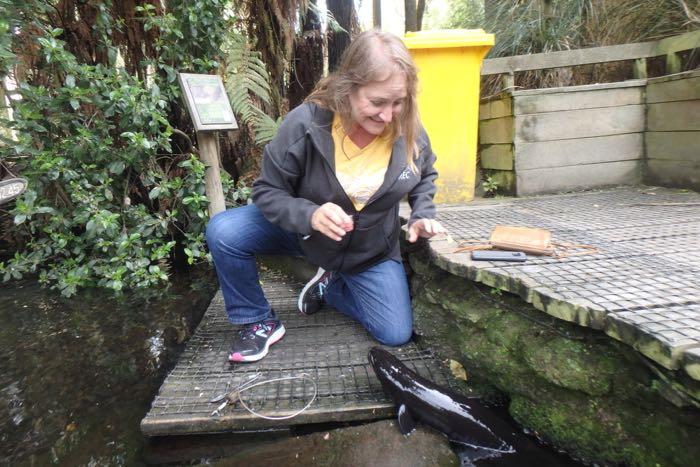 Feeding Eels at the Willowbank Wildlife Reserve
Feeding Eels at the Willowbank Wildlife Reserve
These carnivorous fish eat insects larva, fish, and even baby birds. They mainly rely on smell, not sight, to find their prey. I was feeding them small pieces of meat- kind of like raw hamburger. I was a little worried about their rows of very sharp teeth
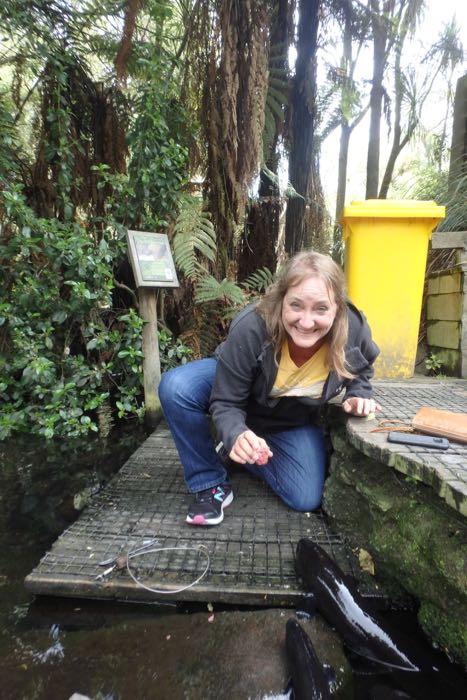 Feeding Eels at the Willowbank Wildlife Reserve
Feeding Eels at the Willowbank Wildlife Reserve
A Living Dinosaur!
I first heard of Tuataras years ago when I started teaching taxonomy to seventh graders. These rare animals look just like a lizard, but are only very distantly related. They are the most ancient of reptiles, with fossils dating back 200 million years. All others in this order died out 60 million years ago.There are only two species in the order Rhynchocephalia. Less than 300 of one, and 20,000 or so of the other that live on the small islands around New Zealand. They used to be on the mainland of New Zealand, but the introduction of rats, cats, and pigs led to their extinction there.
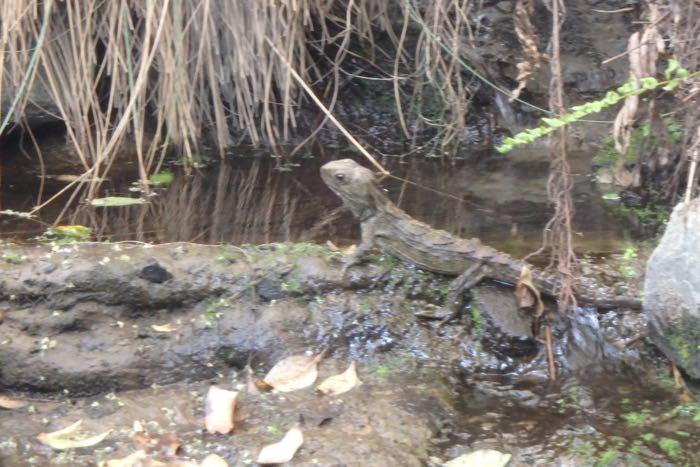 An endangered Tuatara relaxing in the sun at the Willowbark Wildlife Reserve
Third eye??!!
An endangered Tuatara relaxing in the sun at the Willowbark Wildlife Reserve
Third eye??!!
Yes, this unique reptile actually has a third eye in the middle of its forehead!! It has a retina, corneal and nerve bundles, but does not appear to play a role in vision. It gets covered up by scales when it is only 4 to 6 months old. These carnivores also have crazy teeth. They have a single row of pointed lower teeth, and a double row on the top.
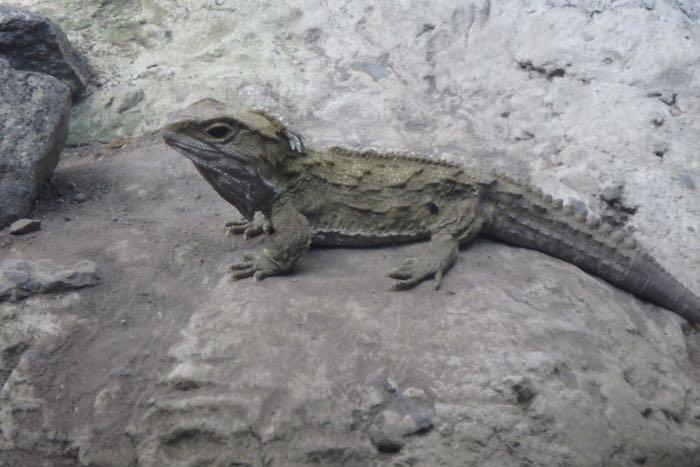 An endangered tuatara sunning himself at the Willobark Wildlife Reserve
An endangered tuatara sunning himself at the Willobark Wildlife Reserve
They can grow to between 12 and 30 inches long as adults and weigh about two and one half pounds. Amazingly, they can live up to 100 years old. Scientist think their slow metabolism contributes to their slow growth and long life span.
Wallabies
Well, I just couldn't come to New Zealand without visiting one of its most famous residents. Wallabies are introduced species from the 1800's. They escaped and thrived so well, they were considered a "noxious" species/ Populations had to be controlled as they were taking over native species habitats.
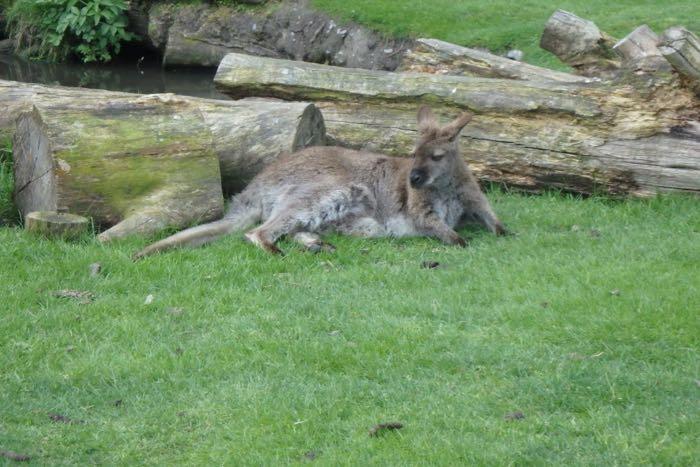 One comfy wallaby at the Willowback Wildlife Reserve
One comfy wallaby at the Willowback Wildlife Reserve
House Sparrow
This free spirited little guy caught my eye at thee Wildlife Reserve today. I believe it is a male house sparrow. These gregarious little birds were introduced to NewZealand in the 1800's in an attempt to control insect populations. They did very well because of their amazingly short reproductive cycle. They lay eggs and incubate them for 10 to 12 days. Then the chicks fledge and are ready to fly in only 14-16 more days. While these chicks are in the next, the female will often lay another clutch of eggs. The parents both go look for food while the chicks incubate their siblings! They are found living wherever humans live.
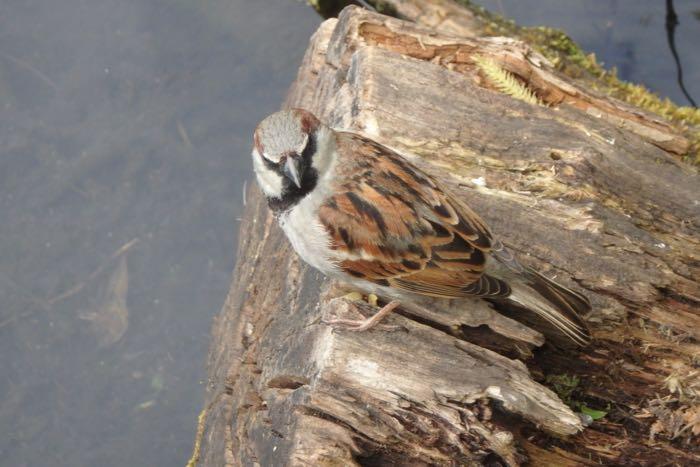 Tentatively Identified Housefinch at the Willowbark Wildlife Reserve
Tentatively Identified Housefinch at the Willowbark Wildlife Reserve
On the Not So Wild Side...
The Willowbark Sanctuary also maintains many domesticated species. These rare and endangered sheep, Nadudana cattle, and Arapawa goats, are mostly from nearby islands where they have come under pressure to be removed.
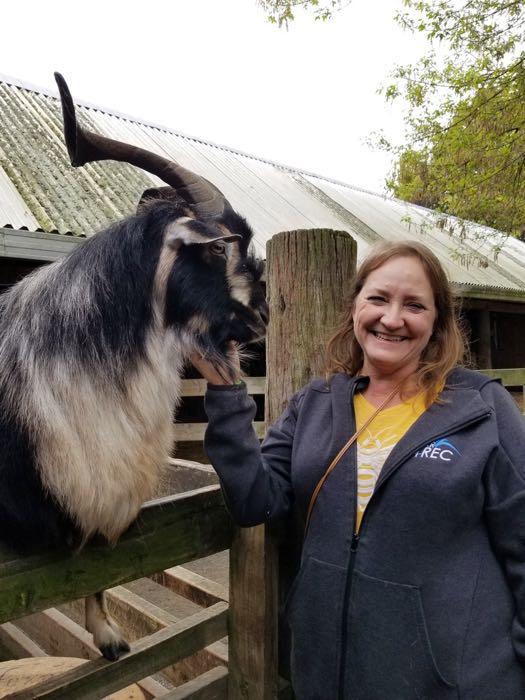 Endangered goats making friends with Denise Hardoy
Endangered goats making friends with Denise Hardoy
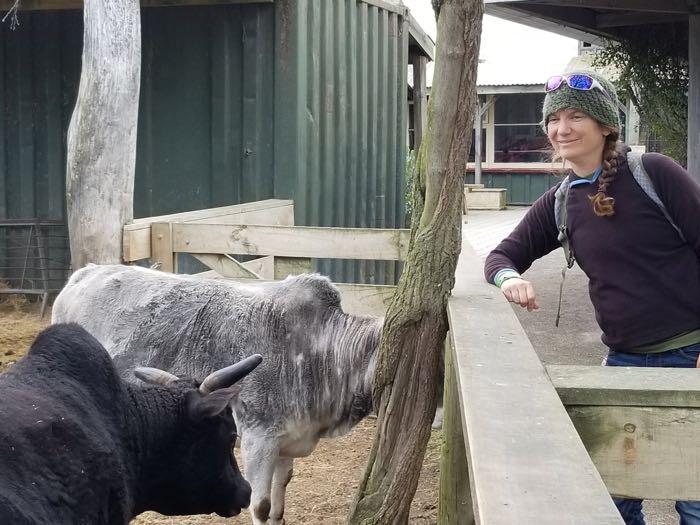 Rare mini cows
Rare mini cows
Local efforts are attempting to save the genetics from very small populations.
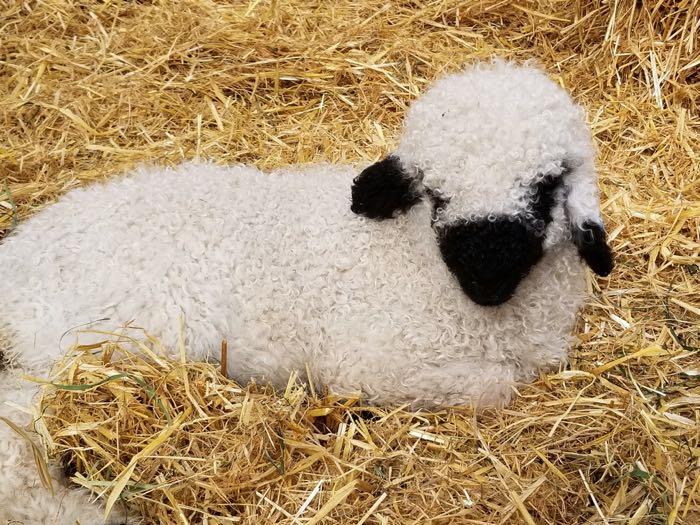 NewZealand is famous for their sheep. This Valaise lamb is a new breed imported to NZ.
NewZealand is famous for their sheep. This Valaise lamb is a new breed imported to NZ.
These Swiss bred sheep are relative newcomers to New Zealand. They are popularly known as the world's cutest sheep. I would say after seeing them in person, I definitely agree!
Baby Ducks!Although plentiful, I couldn't resist posing with the adorable ducklings. It is amazing how young they are to be imprinted on people as a food source. They followed us everywhere!
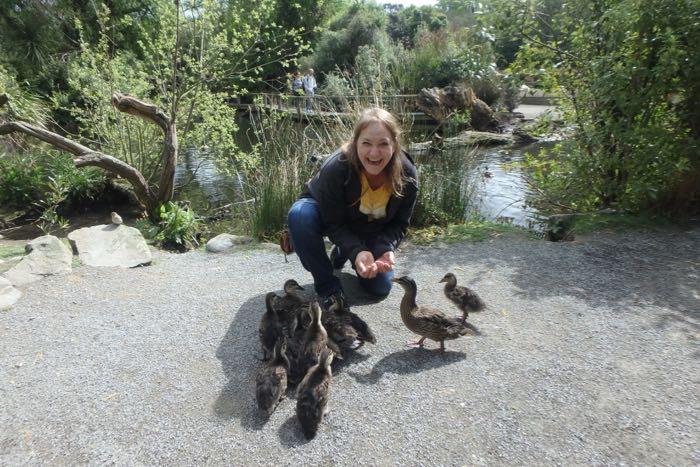 Hungry ducklings at Wilowbark Wildlife Reserve
Hungry ducklings at Wilowbark Wildlife Reserve
That's Just Rubbish
While here in New Zealand, I have been embracing the local idioms. It is cool how they can have a different way of saying something. We are all speaking English, yet I sometimes have a hard time understanding them. Some of the fun ones: Rubbish bin=trash can
knackered=tired
Bloke: person
Lift=elevator
Take away= To go (food)
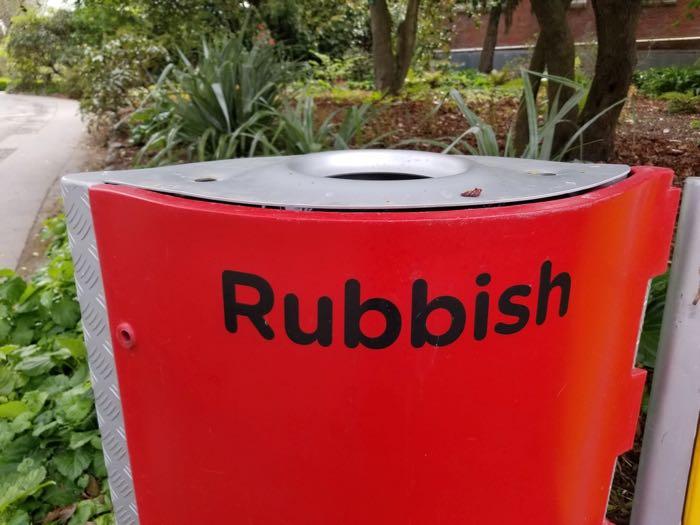 Trash cans are called rubbish bins here in NZ
Trash cans are called rubbish bins here in NZ
Protect Your Food!
Yesterday, we went down to Lyttelton by the ocean, to eat dinner. You travel 6,000 miles, and guess who we saw?
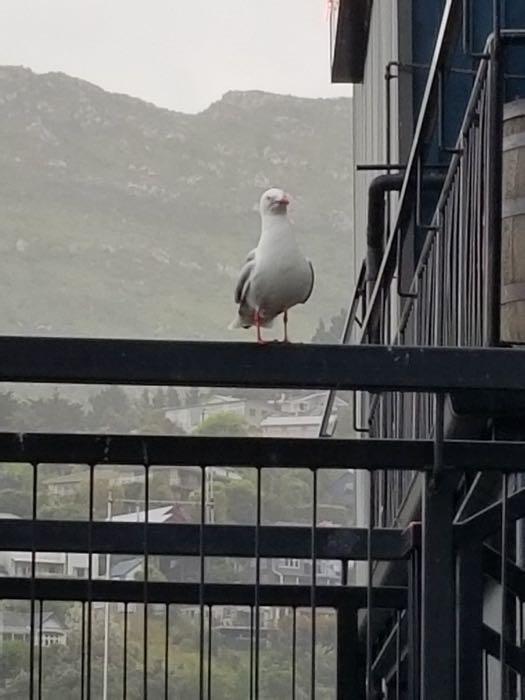 A hungry sea gull ready to grab a few stray fries.
A hungry sea gull ready to grab a few stray fries.
Yep, sea gulls were trying to steal our fries. The locals had squirt guns at every table to help keep them at bay.
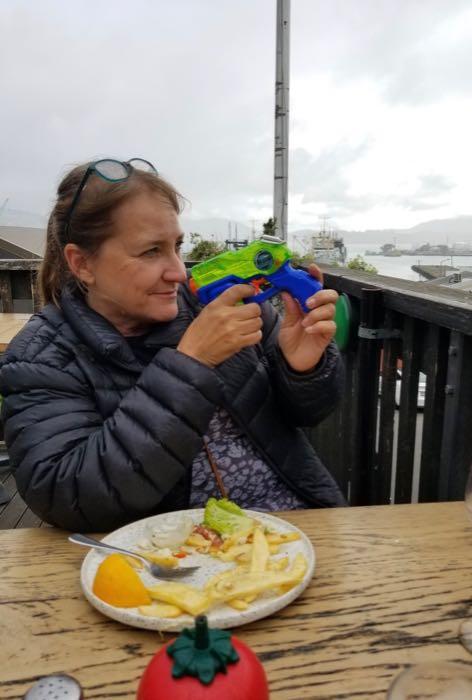 Denise Hardoy defending her dinner from gulls.
Denise Hardoy defending her dinner from gulls.
Best News Yet
We got the long awaited e-mail this afternoon. Our windshield has been fixed. We are going to try to fly to Antarctica tomorrow!!! I've enjoyed Christchurch, but I am ready for the ICE! So, until I'm on ice,
Psych!
And then, the hotel staff contacted us...and we are postponed again until Saturday. Wow! This is crazy, but we will get there eventually. I guess if it was easy, everyone would be doing this. Saturday it is!
Stay Cool!


Comments
Add new comment